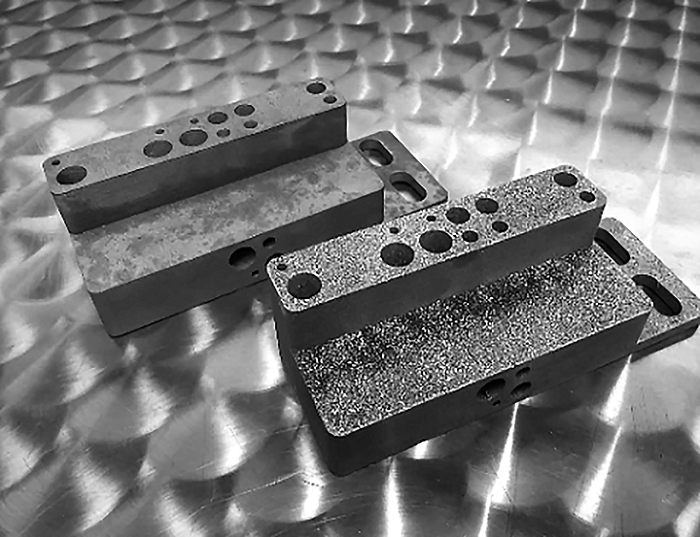ISO 6506 Brinell Hardness Testing of Post-Processed Surfaces
The ISO 6506 standard defines the method for determining the hardness of metallic materials using a Brinell hardness tester. This test is particularly relevant in additive manufacturing and 3D printing sectors where post-processing treatments play a crucial role in enhancing surface properties, such as wear resistance, corrosion resistance, or aesthetic appeal.
In the context of Additive Manufacturing (AM) and 3D printing, post-processing can encompass various techniques like heat treatment, coating, polishing, or grinding. These processes are essential to achieve desired mechanical properties and ensure that parts meet specific performance criteria. The ISO 6506 Brinell hardness test provides a reliable means to assess the effectiveness of these treatments.
The testing procedure involves placing the specified ball indenter onto the surface under an exact load, measuring the diameter of the indentation, and calculating the resultant Brinell Hardness Number (HB). For post-processing treatments like laser cladding or thermal spray coatings, this test ensures that the modified surfaces meet the required hardness levels as per industry standards.
The accuracy and repeatability of ISO 6506 testing are critical for quality assurance in AM and 3D printing. By applying this standard, manufacturers can verify that their parts comply with design specifications and regulatory requirements. This ensures consistent product quality across batch runs and different production facilities.
Furthermore, the Brinell hardness test provides insights into how post-processing treatments affect the microstructure of metallic materials. Understanding these effects is vital for optimizing manufacturing processes and achieving optimal material properties. For instance, in aerospace applications, where part integrity is paramount, accurate hardness testing can prevent potential failures due to substandard surface quality.
With advancements in AM and 3D printing technologies, there has been an increasing emphasis on tailoring materials and treatments for specific end-use applications. ISO 6506 Brinell hardness testing supports this trend by offering a standardized approach to evaluate the performance of these customized materials.
- Ensures compliance with international standards such as ISO 6506.
- Provides reliable data for quality assurance and process control.
- Supports optimization of post-processing treatments in AM processes.
- Aids in achieving consistent product performance across different manufacturing locations.
The Brinell hardness test is a valuable tool for ensuring that parts produced through additive manufacturing and 3D printing meet the necessary quality standards. By using this method, manufacturers can enhance their reputation by delivering products with superior surface properties, thereby increasing customer satisfaction and market competitiveness.
Benefits
The ISO 6506 Brinell hardness test offers several advantages to those involved in additive manufacturing and 3D printing. Firstly, it provides a standardized method for assessing the hardness of metallic materials post-processing, which is critical for ensuring consistent quality across different batches and production sites.
Secondly, this testing approach allows manufacturers to verify that their parts meet specific design requirements and regulatory standards. This ensures compliance with industry best practices and reduces the risk of non-compliance penalties.
Thirdly, by using ISO 6506 Brinell hardness testing, companies can optimize their post-processing treatments. Understanding how different processes affect material properties enables engineers to refine their techniques for better outcomes. This leads to improved product performance and extended service life.
Forth, the test results contribute significantly to R&D efforts by providing empirical data that informs future developments in AM and 3D printing technologies. Researchers can use these findings to explore new materials and processes, leading to innovations in the field.
Lastly, ISO 6506 testing enhances customer confidence through transparent quality assurance practices. Demonstrating adherence to international standards builds trust with clients and stakeholders, fostering long-term relationships based on reliability and expertise.
Eurolab Advantages
Eurolab is renowned for its commitment to excellence in testing services. Our state-of-the-art facilities equipped with advanced instrumentation ensure precision and accuracy in every test conducted. With experienced professionals specializing in various fields, including metallurgy and materials science, we offer comprehensive support tailored to your unique needs.
We pride ourselves on delivering timely results while maintaining the highest standards of confidentiality and integrity. Our extensive network of laboratories across Europe guarantees accessibility regardless of location or project size. Whether you require one-off tests or ongoing monitoring programs, Eurolab can meet all your requirements efficiently and effectively.
Our expertise extends beyond mere testing; we also provide valuable insights through detailed reports that include recommendations for process improvements based on our findings. This proactive approach helps clients stay ahead of industry trends and maintain competitive edge in their respective markets.
Why Choose This Test
- Comprehensive and reliable testing according to ISO standards.
- Accurate measurement of Brinell hardness on post-processed surfaces.
- Supports quality assurance in additive manufacturing processes.
- Provides valuable data for research and development activities.
- Fast turnaround times with minimal disruption to production schedules.
- Confidentiality and integrity of test results are guaranteed.
The ISO 6506 Brinell hardness test stands out among other testing methods due to its ability to provide precise and consistent measurements. This is especially important when dealing with complex structures that undergo multiple stages of manufacturing and post-processing. The reliability of these tests allows manufacturers to make informed decisions about their processes, ultimately leading to higher quality products.
Moreover, the test's adaptability makes it suitable for various industries beyond just additive manufacturing. It can be applied in sectors ranging from automotive to aerospace where high-strength materials are needed. By ensuring that all parts meet stringent hardness criteria, this testing ensures safety and reliability across these diverse fields.





